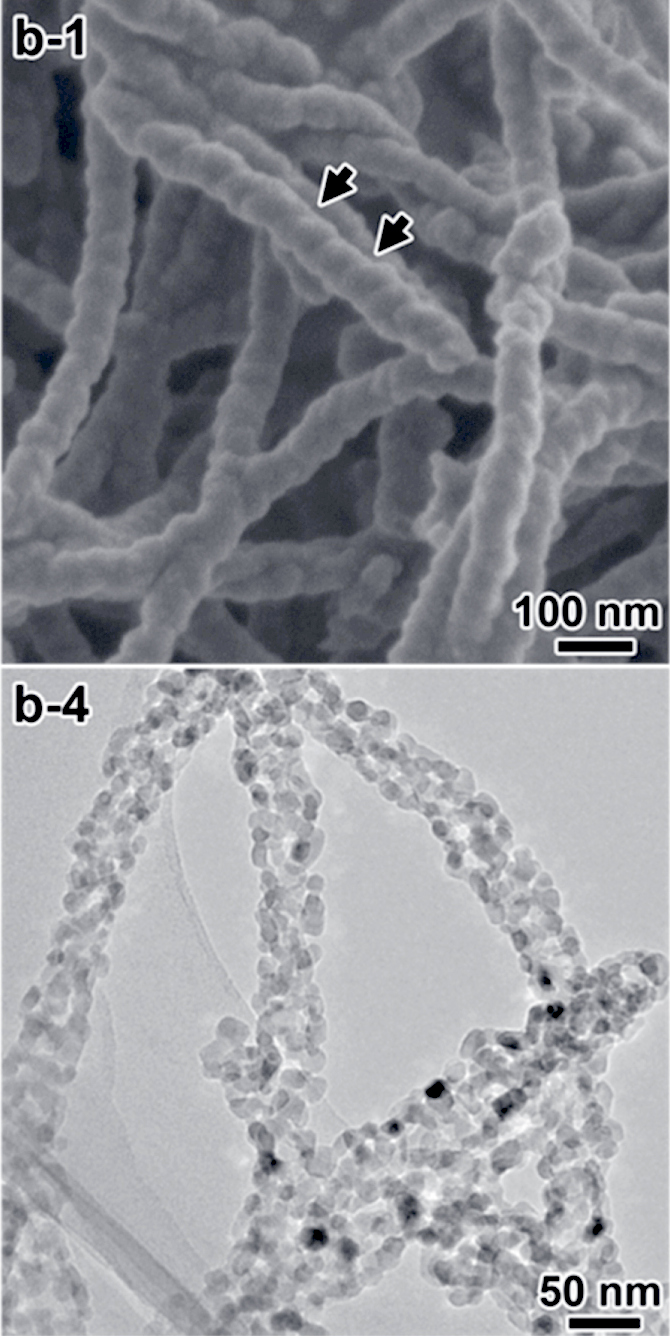Titanium(IV) butoxide on:
[Wikipedia]
[Google]
[Amazon]
Titanium butoxide is an metal-organic
 Tetrabutyl orthotitanate reacts with alkylcyclosiloxanes. With ocatamethylcyclotetrasiloxane it produces dibutoxydimethylsilane, 1,5-dibutoxyhexamethyltrisiloxane, 1,7-dibutoxyoctamethyltetrasiloxane, 1,3-dibutoxytetramethyldisiloxane and polymers. With hexamethylcyclotrisiloxane it also produces dibutoxydimethylsilane.
Tetrabutyl orthotitanate reacts with alkylcyclosiloxanes. With ocatamethylcyclotetrasiloxane it produces dibutoxydimethylsilane, 1,5-dibutoxyhexamethyltrisiloxane, 1,7-dibutoxyoctamethyltetrasiloxane, 1,3-dibutoxytetramethyldisiloxane and polymers. With hexamethylcyclotrisiloxane it also produces dibutoxydimethylsilane.
chemical compound
A chemical compound is a chemical substance composed of many identical molecules (or molecular entities) containing atoms from more than one chemical element held together by chemical bonds. A molecule consisting of atoms of only one element ...
with the formula Ti(OBu)4 ( Bu = CH2CH2CH2CH3). It is a colorless odorless liquid, although aged samples are yellowish with a weak alcohol-like odor. It is soluble in many organic solvents. It hydrolyzes to give titanium dioxide
Titanium dioxide, also known as titanium(IV) oxide or titania , is the inorganic compound with the chemical formula . When used as a pigment, it is called titanium white, Pigment White 6 (PW6), or CI 77891. It is a white solid that is insolub ...
, which allows deposition of TiO2 coatings of various shapes and sizes down to the nanoscale.
Structure and synthesis
Like most titanium alkoxides (exception:titanium isopropoxide
Titanium isopropoxide, also commonly referred to as titanium tetraisopropoxide or TTIP, is a chemical compound with the formula . This alkoxide of titanium(IV) is used in organic synthesis and materials science. It is a diamagnetic tetrahedral m ...
), Ti(OBu)4 is not a monomer but exists as a cluster (see titanium ethoxide
Titanium ethoxide is a chemical compound with the formula Ti4(OCH2CH3)16. It is a colorless liquid that is soluble in organic solvents but hydrolyzes readily. It is sold commercially as a colorless solution. Alkoxides of titanium(IV) and zirconi ...
). Nonetheless it is often depicted as a simple monomer.
It is produced by treating titanium tetrachloride
Titanium tetrachloride is the inorganic compound with the formula . It is an important intermediate in the production of titanium metal and the pigment titanium dioxide. is a volatile liquid. Upon contact with humid air, it forms thick clouds ...
with butanol
Butanol (also called butyl alcohol) is a four-carbon alcohol with a formula of C4 H9 O H, which occurs in five isomeric structures (four structural isomers), from a straight-chain primary alcohol to a branched-chain tertiary alcohol; all are a bu ...
:
:TiCl4 + 4 HOBu → Ti(OBu)4 + 4 HCl
The reaction requires base to proceed to completion.
Reactions
Like other titanium alkoxides, titanium butoxide exchanges alkoxide groups: :Ti(OBu)4 + HOR → Ti(OBu)3(OR) + HOBu :Ti(OBu)3(OR) + HOR → Ti(OBu)2(OR)2 + HOBu etc. For this reason, titanium butoxide is not compatible with alcohol solvents. Analogous to the alkoxide exchange, titanium butoxide hydrolyzes readily. The reaction details are complex, but can be summarized with this balanced equation. :Ti(OBu)4 + 2 H2O → TiO2 + 4 HOBu Pyrolysis also affords the dioxide: :Ti(OBu)4 → TiO2 + 2 Bu2OReactions and hazard
 Tetrabutyl orthotitanate reacts with alkylcyclosiloxanes. With ocatamethylcyclotetrasiloxane it produces dibutoxydimethylsilane, 1,5-dibutoxyhexamethyltrisiloxane, 1,7-dibutoxyoctamethyltetrasiloxane, 1,3-dibutoxytetramethyldisiloxane and polymers. With hexamethylcyclotrisiloxane it also produces dibutoxydimethylsilane.
Tetrabutyl orthotitanate reacts with alkylcyclosiloxanes. With ocatamethylcyclotetrasiloxane it produces dibutoxydimethylsilane, 1,5-dibutoxyhexamethyltrisiloxane, 1,7-dibutoxyoctamethyltetrasiloxane, 1,3-dibutoxytetramethyldisiloxane and polymers. With hexamethylcyclotrisiloxane it also produces dibutoxydimethylsilane.
References
{{Titanium compounds Titanium(IV) compounds Alkoxides